An Experienced Marketer Shares His Top 4 Metrics for Lead Generation
Newer marketing managers don’t always know which lead generation metrics they should be tracking to meet their goals. This is especially true if you’re among the 52% of B2B multichannel marketing leaders who have struggled to align the effectiveness of their marketing channels’ KPIs with their business outcomes. [1]
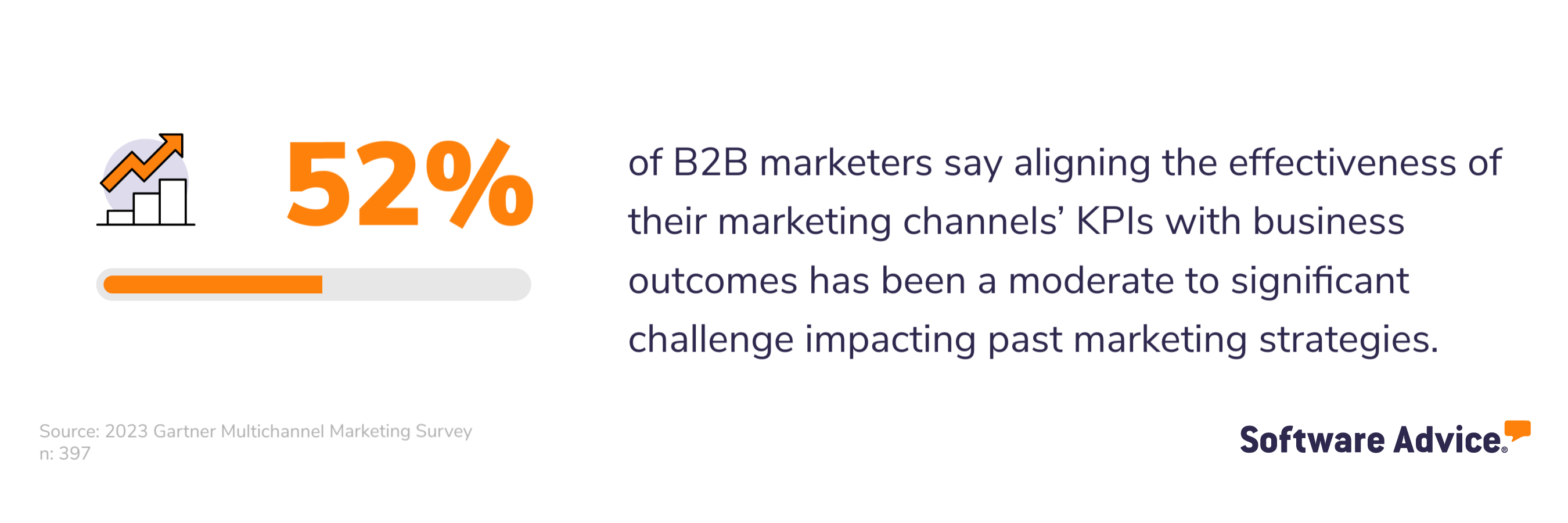
To get the scoop on which lead generation metrics experienced marketers are measuring to meet their goals, we spoke with Valentino Chiavarini of Green Hive, [2] a platform that rates ethical brands. Chiavarini shares his four must-have metrics as well as the tech tools his organization uses for tracking lead generation metrics.
Valentino Chiavarini
Founder and CEO of Green Hive [2]
What are lead generation metrics?
Lead generation metrics are a subset of marketing metrics that focus specifically on bringing in leads. They help gauge the success of marketing campaigns based on the quality and quantity of leads brought in. They also assist in assessing the efficiency of lead generation channels, campaigns, and strategies.
1. Track response rate to level up your outreach
Response rate typically refers to the number of people who respond to a particular marketing campaign. For Chiavarini, it’s the total number of brands his marketing team reaches out to on LinkedIn versus the number that respond positively and register on their platform.
“This provides insight into the effectiveness of our LinkedIn outreach strategy in attracting sustainable brands,” Chiavarini explains. “Tracking response rate allows us to refine our messaging and approach on LinkedIn, ensuring we maximize our brand acquisition efforts from this channel.”
How to calculate response rate
Take the number of responses returned and divide it by the total number of queries (or messages or connection requests) sent out. Then, multiply the result by 100.
Response rate = (Total responses received / Total requests sent) x 100
Tools to track response rate
While Chiavarini and his team write their LinkedIn messages themselves, they use tools such as customer relationship management (CRM) software and LinkedIn Sales Navigator—LinkedIn’s built-in lead capture tool—to get a 360-degree view of their outreach efforts.
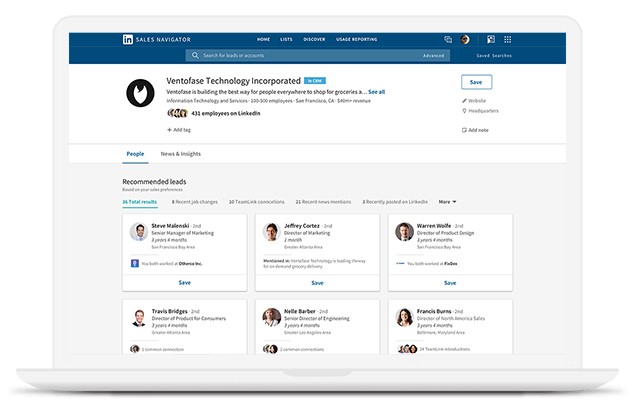
Marketing platform LinkedIn Sales Navigator recommending leads to pursue
Using CRM and marketing tools in tandem is a great way to boost your outreach efforts. First, it helps your brand nurture leads and develop better relationships with customers before they are passed on to your sales team. Second, it provides insights into customer behavior by gathering information about activities such as browsing habits and responses to marketing campaigns.
Check out this article for more information on aligning your CRM strategy with marketing efforts.
2. Track cost per lead to maximize your marketing budget
Cost per lead (CPL) is an important lead generation metric because it measures how cost-effective your marketing campaigns are when it comes to generating new leads. Chiavarini prioritizes this metric because it shows where he can afford to spend more or cut back. “By optimizing our CPL,” he says, “we ensure our marketing budget is used efficiently, maximizing the number of leads we can acquire for each dollar spent.”
How to calculate cost per lead
Divide your total amount spent on marketing within a certain time frame by the number of new leads generated within that same time frame.
CPL = Total amount spent on marketing / Number of new leads generated
Tools to track cost per lead
To track CPL, Chiavarini’s team uses spreadsheets, mainly for reviewing their monthly expenses and number of leads. This is a great option for smaller businesses like Green Hive, but as your business grows, you may want to automate this process by using tools such as lead generation software.
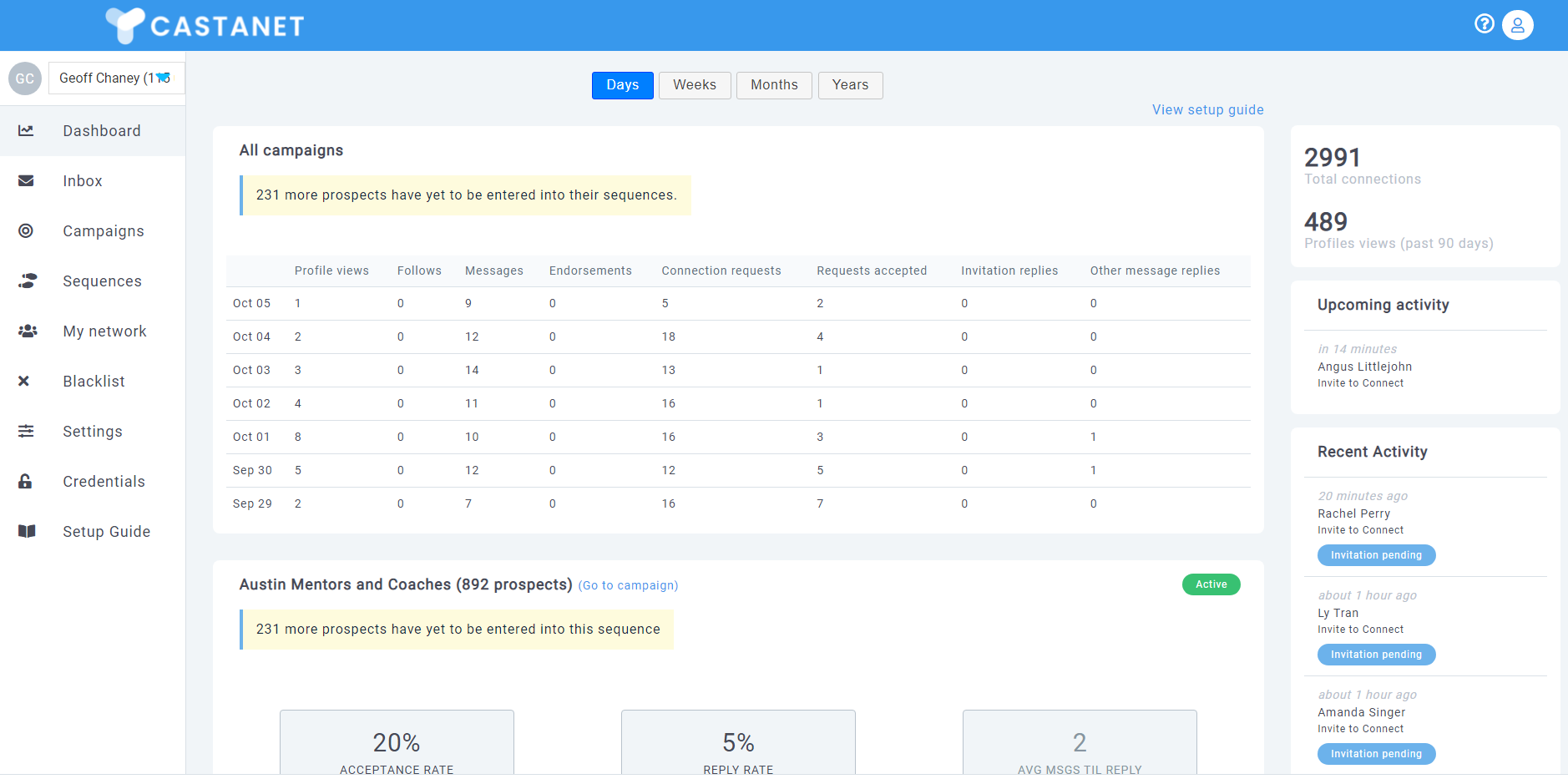
Dashboard with CPL tracking in lead generation platform CASTANET
Lead generation tools can track and measure CPL as well as other metrics such as capture and conversion rates. These insights help identify what is and isn’t working so you can make data-driven decisions to optimize your campaigns. Note, however, that CRM and marketing tools often offer lead integration capabilities, so if you already have these tools, you may not need a separate lead generation platform.
3. Track newsletter sign-up conversion rate to boost engagement
Conversion rate is the percentage of website visitors who complete a desired action, such as making a purchase, engaging with your online chat, subscribing to your YouTube channel, or upgrading their service. In Chiavarini’s case, he’s tracking the number of leads that sign up for Green Hive’s newsletter, whether through his website’s homepage or the pop-up pictured below.

Screenshot of a sign-up pop-up on Greenhive.io, taken by author [3]
“This metric directly measures the effectiveness of our outreach and content in attracting and engaging visitors,” Chiavarini explains. “By monitoring the volume of newsletter sign-ups, we can adjust our content and marketing strategies to continually attract more leads.”
How to calculate newsletter sign-up conversion rate
Take the number of newsletter sign-ups within a given time frame and divide it by the total number of visitors to your website within that time frame. Then, multiply the result by 100.
Newsletter sign-up conversion rate = (Number of sign-ups / Total number of visitors to website) x 100
Tools to track newsletter sign-up conversion rate
To track Green Hive’s newsletter sign-up conversion rate, Chiavarini uses email marketing software. These tools help him track new sign-ups, which he then matches up against website traffic data from Google Analytics to see how his company’s outreach is doing.
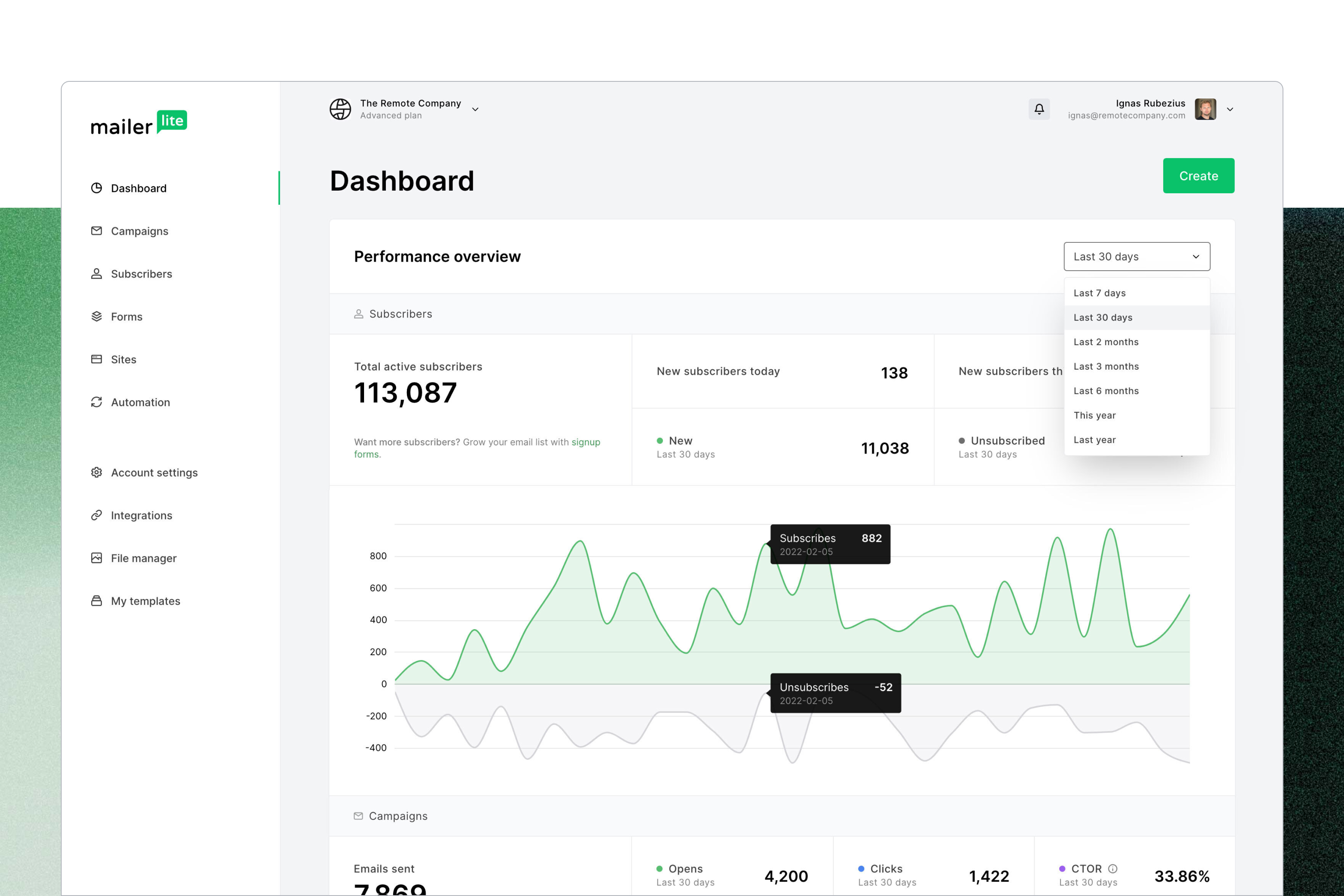
Website performance overview in email marketing platform MailerLite
Chiavarini uses email marketing tools for lead capture, but these tools also offer a wealth of other functionality such as segmenting your target audience and sending bulk emails. They even let you track email open and click-through rates, which we discuss in more detail in the next section.
4. Track open and click-through rates to assess email performance
Open rate and click-through rate (CTR) are used to measure the effectiveness of email marketing campaigns. Open rate refers to the percentage of users who open emails from your brand, while CTR refers to the percentage who click on the content within.
“These two metrics gauge the relevance and appeal of our newsletter content to our users,” Chiavarini explains. “By monitoring and optimizing emails based on these rates, we can continually refine our content strategy to ensure it remains engaging and valuable to our users.”
According to Software Advice’s 2022 Email and Social Media Marketing Survey, 65% of marketers claim open rate is their primary metric.* But research shows it’s important to measure open rate with other metrics such as CTR. [4] This is because open rate only counts opened emails, while CTR shows how often users are taking action from your email messages.
How to calculate open and click-through rates
To measure open rate, divide the number of opened emails by the total recipients minus the number of bounced emails. Then, multiply by 100.
Open rate = Number of opened emails / (Total recipients - Number of bounced emails) x 100
To measure click-through rate, divide the number of clicks by the number of views and multiply by 100.
Click-through rate = (Number of clicks / Number of views) x 100
Tools to track open and click-through rates
Chiavarini and his team use the same email marketing software to track open and click-through rates as they use to track newsletter sign-up conversion rate. To track these metrics, email marketing tools implement tactics such as urchin tracking module (UTM) links. These links include unique identifiers that pinpoint what message or campaign a click came from. You can also add UTM links to your website to track where your leads are coming from.
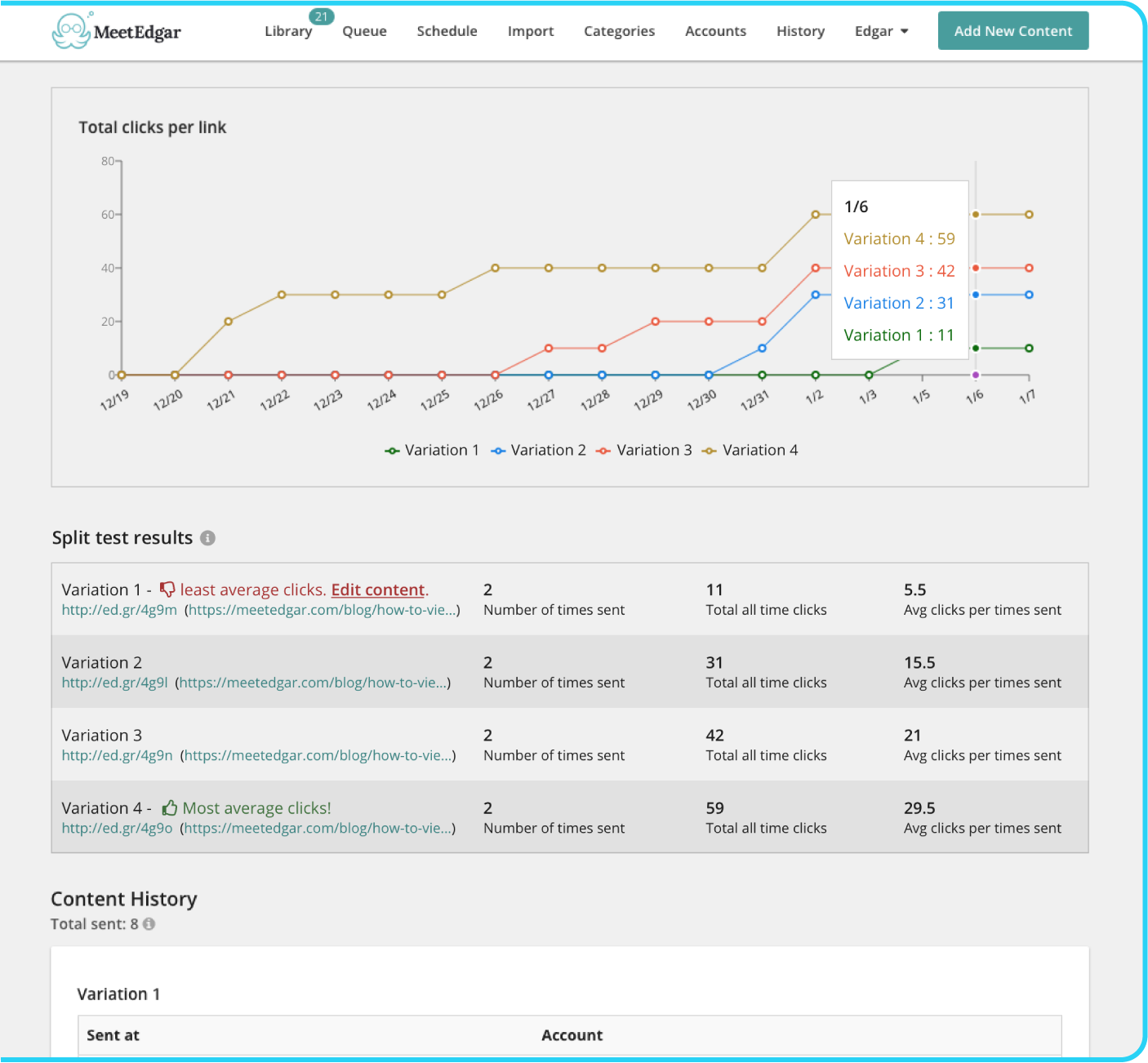
Email campaign analytics in email marketing platform Edgar
Other metrics worth measuring
There are more lead generation metrics than we can cover in one article. We’ve highlighted the top four based on our interview with Chiavarini. But to give you a better sense of your options, here are a few others you might consider tracking:
Marketing qualified lead (MQL): A marketing qualified lead refers to a potential sales lead that has expressed interest in your product or service.
Customer lifetime value (CLV): Customer lifetime value is the average revenue brought in by a customer relationship over its lifetime.
Customer acquisition cost (CAC): Customer acquisition cost is the average sales and marketing expenses necessary to achieve a first sale with customers.
Customer conversion rate: Customer conversion rate is the percentage of leads that make a purchase from your brand.
Use the right tech tools to track lead generation metrics
While the four metrics we’ve covered are specific to Chiavarini and his marketing team, they’re a great example of how the right combination of metrics can give you a big-picture sense of your lead generation efforts.
Valentino Chiavarini
Founder and CEO of Green Hive
The table below recaps the tools Chiavarini uses to track lead generation metrics:
Metric | Purpose | Software used |
|---|---|---|
Response rate | Improve outreach efforts | CRM and marketing |
Cost per lead | Maximize marketing budget | Lead generation, CRM, marketing |
Newsletter sign-up conversion rate | Boost engagement | Email marketing |
Open rate and click-through rate | Assess email campaign performance | Email marketing |
For more information on lead generation, check out the following articles:
Note: Questions and responses have been edited for brevity and clarity.
Note: The screenshots of applications included in this article are examples to show a feature in context and are not intended as endorsements or recommendations.
Survey methodology
*Software Advice’s 2022 Email and Social Media Marketing Survey was conducted in January 2022 among 299 respondents to learn more about email and social media marketing tactics in small, midsize, and large businesses. Respondents were screened for full-time employees of all company sizes that have involvement with marketing-related activities. They must have been working within roles including advertising, brand management, customer experience or service, data and analytics, IT, marketing, product marketing and management, sales, or strategic planning and be current email and social media marketing users.
Sources
Valentino Chiavarini, LinkedIn
Green Hive, Green Hive
Market Guide for Email Marketing, Gartner